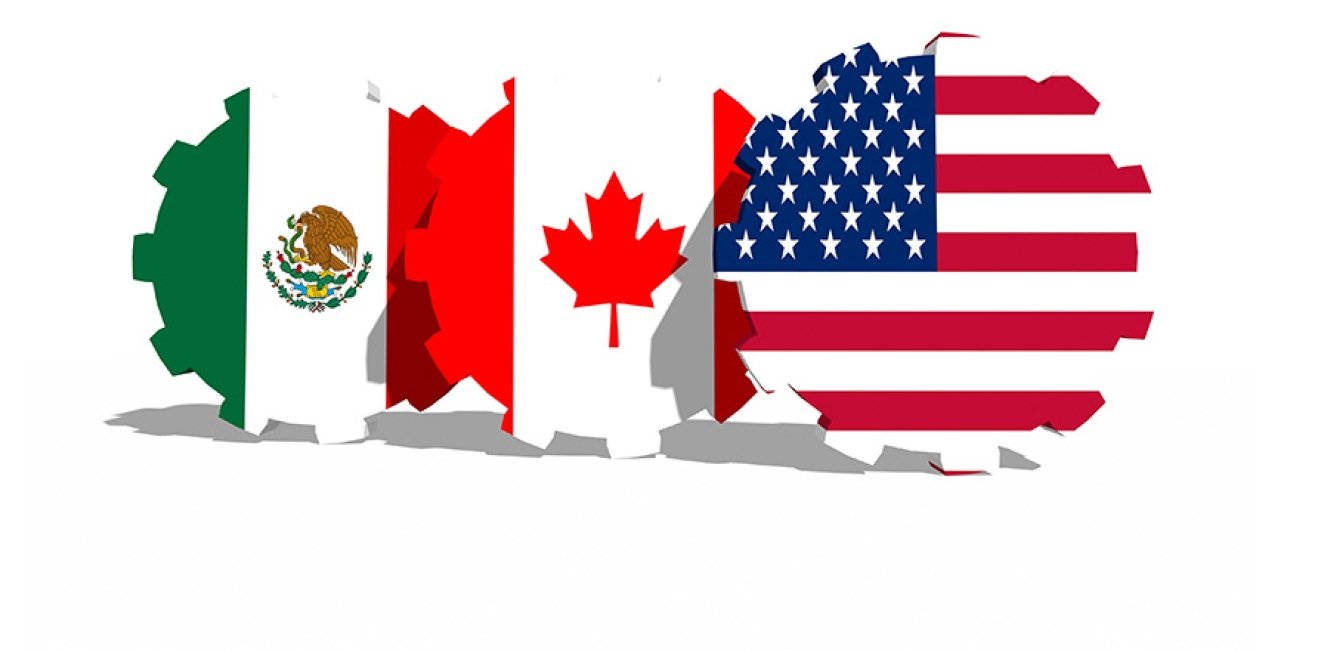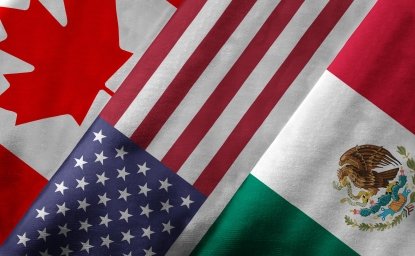The fifth round of negotiations to modernize the trade agreement between the United States, Canada and Mexico begins this week, after a contentious October session, a prolonged break and a decision to extend talks into early 2018.
Observers are increasingly expressing concern about the costs of a NAFTA withdrawal by the United States, but on the eve of the talks Commerce Secretary Ross suggested that the U.S. will continue to press its hardline demands on U.S. neighbors because they have more to lose if the talks collapse.
That is a dangerous tactic given the massive potential negative impact for the U.S. economy and jobs. Time is also of the essence given Mexico’s July 2018 Presidential elections: an agreement would need to initialed by early next year or wait until 2019 and then possibly face a more hostile Mexican government.
Despite Mr. Ross’ apparent determination to press Mexico and Canada to accept U.S. proposals on the table, a good deal is possible if the U.S. moves beyond its widely criticized October positions and presents data-driven proposals that can serve as a solid basis for negotiations to progress.
The fourth negotiating round ended with the Mexicans and Canadians alarmed, and U.S. business and agricultural groups proclaiming that U.S. proposals were harmful and dangerous for U.S. jobs and prosperity. President Trump and Commerce Secretary Ross continued to suggest a possible NAFTA withdrawal unless Mexico and Canada accede to US demands, even though Canada and Mexico are the U.S.’ top two export markets, supporting up to 14 million U.S. jobs.

It was particularly disheartening that U.S. Trade Representative Lighthizer said the U.S. team had not analyzed the costs of ending NAFTA. How can the U.S. negotiate for major and controversial changes to a $1.2 trillion trade agreement and threaten withdrawal if they don’t succeed, without understanding well what might be the costs to the U.S.? Not surprisingly, U.S. business and agricultural groups have been using the break between negotiations to highlight the costs of withdrawal as well as underscoring the benefits of trade with America’s two neighbors.
A 2017 study by ImpactEcon estimates that an end to NAFTA would lead to a decline in real GDP and employment in all three countries. For the U.S., the study estimates job losses between 256,000 and 1.2 million in 3-5 years; with some ninety thousand others forced to relocate jobs to other sectors. The authors say the decline in U.S. GDP could be 0.64 percent (or well over $100 billion). This impact reflects the massive trade the U.S. has with Mexico and Canada, and that all three countries use “intermediate” goods from each other to make a wide range of final products.
In a letter to Commerce Secretary Ross, U.S. food and agricultural groups argued that NAFTA withdrawal could cost 50,000 jobs and $13 billion just in their sectors. A Boston Consulting Group study sponsored by the Motor and Equipment Manufacturers Association says leaving NAFTA would put at risk 25,000-50,000 US suppliers’ jobs. An Atlantic Council study looking at post-NAFTA tariff changes estimated the US could lose $12.8 billion in exports to Mexico every year. A survey of 97 Wall Street investment firms managing a combined $2.3 trillion shows over 60% predicting negative impacts on U.S. economic growth and equity markets if the U.S. withdraws from NAFTA. The hardest hit US sectors would include: motor vehicles; agriculture/livestock/food; transportation and logistics; machinery and other manufactured goods; services; and textiles and apparel according to the investors survey and the ImpactEcon study.
There are also an important U.S. strategic interests in play. Mexico holds presidential and congressional elections in July 2018, and the new President takes office in December. Embracing Mexico as a strategic partner was a key reason for forging NAFTA, beyond trade, and it worked. The current Mexican government is a serious partner committed to bilateral cooperation, and Mexico now has a pro-American NAFTA generation. Nevertheless, in the course of the last year, Mexican positive views of the U.S. have dropped to 30%, with 2/3 viewing the U.S. unfavorably. Opinion of the U.S. could get even worse before Mexicans vote depending on the U.S. approach to NAFTA and it could help bring an anti-American president and government to office. The U.S. could end up returning to the “distant” relationship with Mexico that existed before NAFTA fundamentally reshaped attitudes. Damage done could include reduced cooperation in countering drug trafficking, terrorism and Central American immigration.
Americans’ and Mexicans’ Perceptions of each other (percent favorable)

Source: Gallup, 2017; Pew Research Center, 2017.
The ImpactEcon study demonstrates that Mexico and Canada would suffer relatively more if NAFTA ended, but that does not mean the U.S. should be endangering hundreds of thousands of U.S. jobs and many billions of dollars with proposals that the two partners may well not accept.
The U.S. should stop playing with fire by using unhelpful rhetoric, threats and proposals that run contrary to economic analysis. Rather, it should present serious, data driven propositions that can move toward its key stated goals of increasing U.S. sales to its neighbors and reducing deficits in manufacturing. It should engage Mexico and Canada to craft workable ways to grow trade among the three that allows all sides to claim success, not just a U.S. victory.
One key issue is “rules of origin,” which determine how much of a “NAFTA” product needs to be made in North America. At the last round, the U.S. apparently proposed that half of all content of autos be from the U.S. and that the total required North American content rise from 62.5% to 85%. To prepare the ground for this proposal, Commerce Secretary Ross wrote an op-ed titled: “These NAFTA rules are killing our jobs.”
Auto industry groups and economists, however, quickly picked apart the U.S. proposal and op-ed. Auto sector voices said that the U.S. proposals could actually cost up 24,000 U.S. auto sector jobs and continue to sound alarms, pointing out that the U.S. produced a million more autos in 2016 than it did before NAFTA. U.S. auto sector employment grew 41% 2009-16, rather than losing jobs. Another study found that the U.S. value added content in Mexican auto exports to the US is actually about 38%: much higher than Ross cites in his op-ed. Critics note that the biggest cause of declining North American value added in trade is the use of Chinese intermediate goods imports and that the U.S. proposals could increase Chinese content.
The U.S. administration needs to do its homework on the likely impact of specific proposed rules of origin as well as regarding its other controversial proposals, such as a five year sunset clause for NAFTA and eliminating/weakening dispute settlement mechanisms. There is, of course, much other hard work to do, for example on the labor norms and many other “modernization” issues, which will be discussed in Round Five.
The focus, however, needs to be on what is essential for the U.S. and all three countries in the long run – having balanced, job-creating growth that allows all three to better compete in the world with other major producers, notably China. China trade is where the U.S. has a giant deficit, and America does not build things together with China as it does with its neighbors.
There is a pathway, which can address the main U.S. concerns and modernize NAFTA. Seen more broadly: there is a North American solution to the China challenge. But there is also a pathway to major economic disruptions, significant job losses, a weaker U.S. economic position in the world, and a return to “distant” relations with our southern neighbor.
The first pathway to a strong North America is the one that will serve our children and grandchildren well. The second path endangers their future. Mexico and Canada seem committed to the first path. A fundamental question is which path the Trump Administration is intent on following.
Earl Anthony Wayne is a Public Policy Fellow at the Woodrow Wilson Center. He is former U.S. Ambassador to Mexico (2011-15) and former Assistant Secretary of State for Economic and Business Affairs (2000-06), among other positions.
This article was originally published on the Mexico Institute's Forbes blog.







